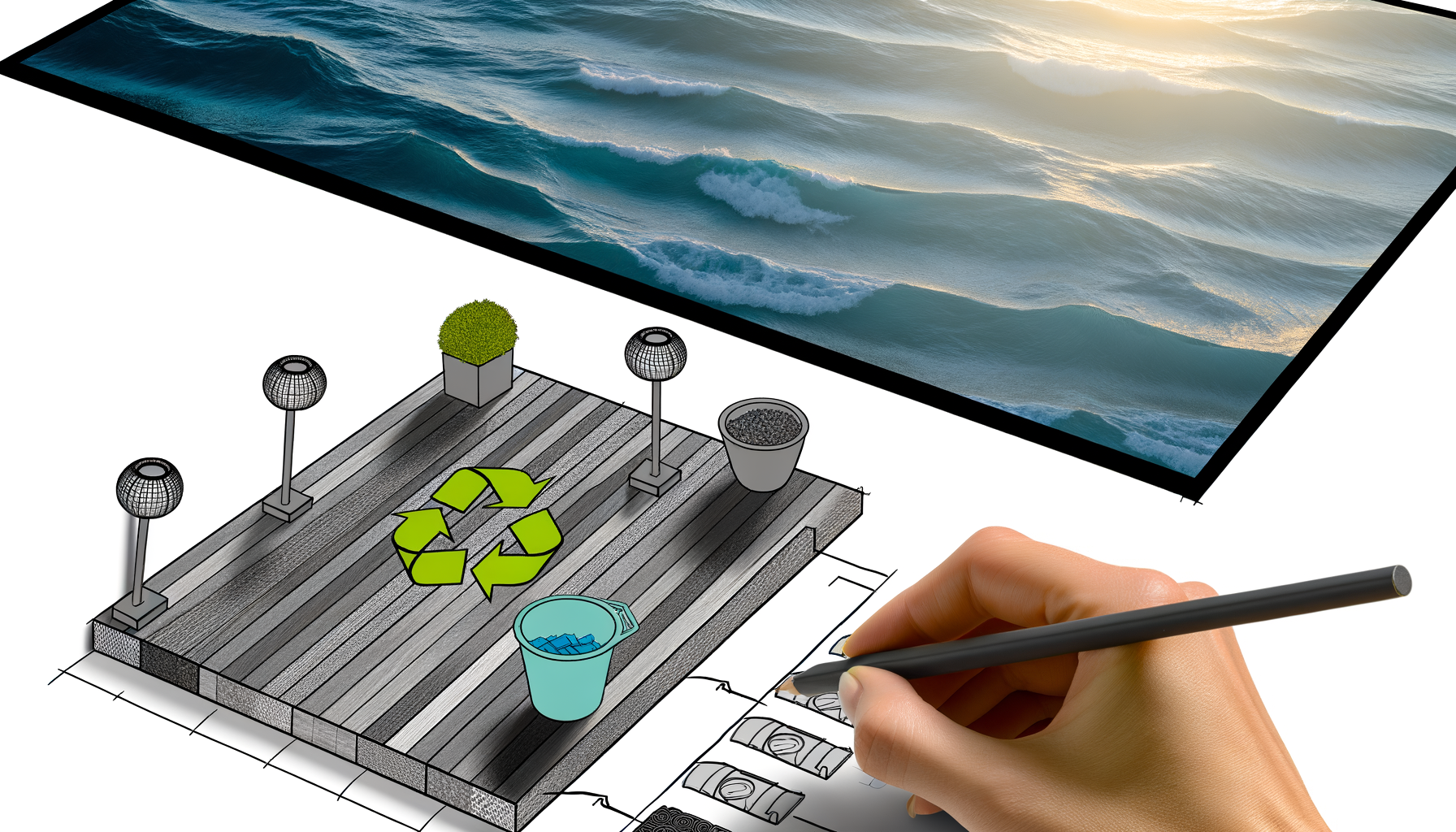Integration of Recycled Ocean Plastics into High-Performance Deck Boards
 Pranali Baderao
Pranali Baderao
Sustainable composite decking has emerged as a game-changer in the realm of outdoor construction and design, combining durability, aesthetic appeal, and eco-friendliness. Among the innovative advancements in this sector, the integration of recycled ocean plastics into high-performance deck boards has garnered substantial attention. This fusion not only addresses the growing environmental concerns associated with plastic pollution but also paves the way for resilient and stylish decking solutions.
The Rising Problem of Ocean Plastic Pollution
Every year, millions of tons of plastic waste find their way into the world’s oceans, disrupting marine ecosystems, harming wildlife, and entering the food chain. This plastic pollution poses a monumental environmental crisis, drawing urgent global attention. Initiatives to clean up the oceans and prevent further waste are critical, but equally important is the need to repurpose and recycle the recovered materials effectively.
Ocean Plastics: From Waste to Resource
Recycled ocean plastics present a unique opportunity to transform harmful waste into a valuable raw material. These plastics typically consist of polyethylene (PE), polypropylene (PP), and other durable polymers that, when processed correctly, can be incorporated into composite materials. Recycling ocean plastics not only keeps these pollutants out of the water but adds a sustainable element to manufacturing processes.
What is Composite Decking?
Composite decking blends wood fibers or wood flour with plastic polymers to create a versatile, low-maintenance building material. Unlike traditional wood decks, composites resist rot, warping, and insect damage, providing long-lasting performance. They come in various colors and textures, often mimicking natural wood, making them a popular choice for modern outdoor spaces.
Why Integrate Recycled Ocean Plastics into Composite Decking?
1. Environmental Impact Reduction: By using ocean-collected plastics, manufacturers reduce the demand for virgin plastic production, lowering carbon footprints and conserving resources.
2. Waste Diversion: Incorporating ocean plastics into decking helps divert waste from landfills and oceans, contributing to cleaner marine environments.
3. Enhanced Durability: Ocean plastics are often sourced from high-quality polymers that enhance the physical properties of composite decking, including UV resistance, weather durability, and structural integrity.
4. Consumer Appeal: Eco-conscious consumers value sustainable products, and decks made with recycled ocean plastics offer a compelling narrative and brand differentiation.
The Manufacturing Process
To integrate recycled ocean plastics into composite decking, manufacturers follow rigorous steps:
Collection and Sorting: Ocean plastics are gathered through cleanup projects and then sorted by polymer type.
Cleaning and Processing: Plastics are thoroughly cleaned to remove salt, organic materials, and debris.
Pelletizing: Clean plastics are shredded and melted into pellets suitable for blending with wood fibers and other additives.
Blending and Extrusion: The recycled plastic pellets are mixed with wood flour and extrusion agents to form composite decking boards.
Quality Control: Finished boards undergo testing for strength, weather resistance, and safety to ensure they meet industry standards.
Performance and Aesthetic Advantages
Composite decks made with recycled ocean plastics maintain high-performance standards. They resist cracking, splintering, and fading, making them ideal for climates subject to moisture, sun exposure, and temperature fluctuations. Additionally, technology advancements allow for an impressive range of colors and textures, providing homeowners and designers with customizable options.
Real-World Success Stories
Several leading companies and communities have successfully adopted recycled ocean plastic decking for their building projects. These cases highlight the material’s versatility and commitment to sustainability, inspiring others in the construction industry to explore green alternatives.
Challenges and Considerations
While promising, the integration of ocean plastics into composite decking does encounter challenges:
Supply Chain Variability: Consistent sourcing of ocean plastics requires ongoing cleanup efforts and collaboration.
Processing Complexity: Thorough cleaning and processing are essential to meet safety and quality standards.
Cost Factors: Initial costs may be higher than conventional decking, though these can be offset by long-term durability and environmental benefits.
The Path Forward: Innovation and Collaboration
Advancing the use of recycled ocean plastics in composite decking calls for innovation in recycling technologies, partnerships between manufacturers and environmental organizations, and consumer education. As more companies invest in sustainable materials and circular economy models, the market for eco-friendly decking grows steadily.
How Consumers Can Support This Movement
Homeowners and builders can drive demand by choosing deck products made with recycled ocean plastics. Supporting brands that prioritize sustainability and transparency helps expand the market and encourages further environmental breakthroughs.
Conclusion
The integration of recycled ocean plastics into high-performance composite decking represents a powerful convergence of environmental responsibility and innovative building solutions. By giving new life to ocean waste, this approach not only protects marine ecosystems but also delivers durable, attractive decking options for consumers. As awareness and technology progress, sustainable composite decking leveraging recycled ocean plastics is poised to become a staple in the future of outdoor construction-contributing to healthier oceans and greener communities worldwide.
Explore Comprehensive Market Analysis of Sustainable Composite Decking Market
SOURCE-- @360iResearch
Subscribe to my newsletter
Read articles from Pranali Baderao directly inside your inbox. Subscribe to the newsletter, and don't miss out.
Written by
